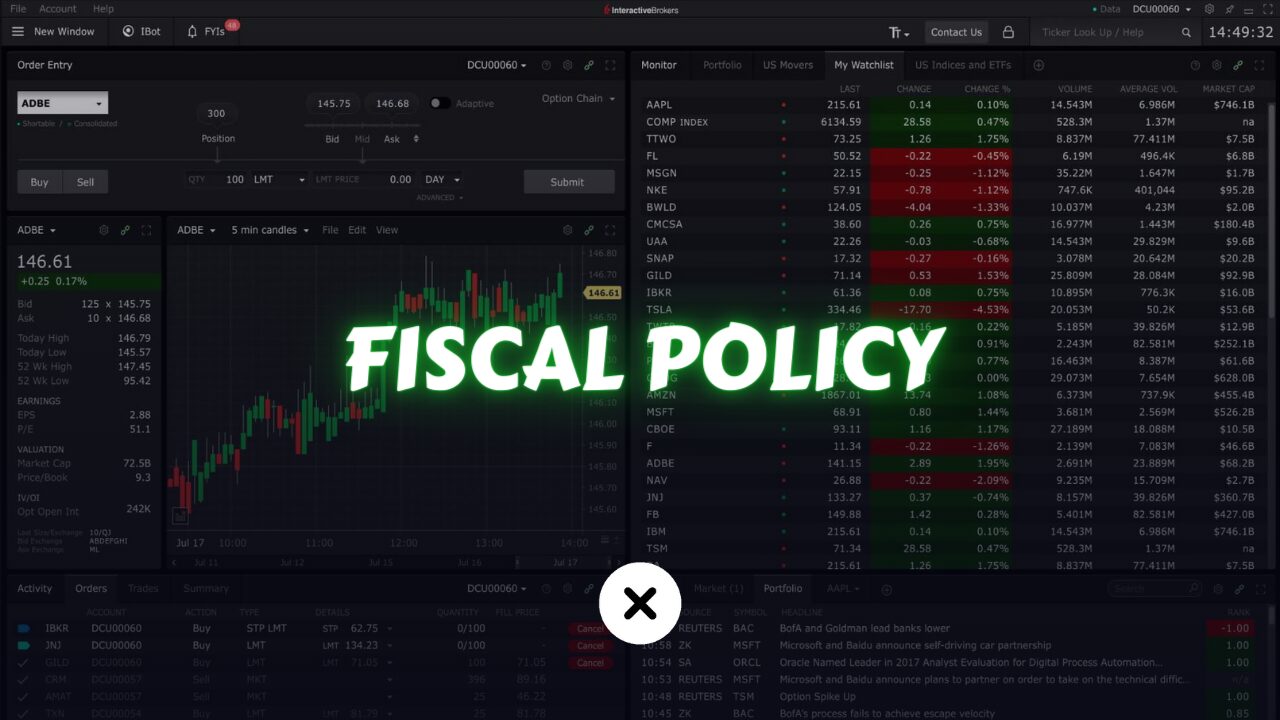
Fiscal policy is a key part of how governments manage their economies. It involves different plans and moves that affect the economy by deciding how the government earns and spends money. These plans have a big impact on how the economy grows, stays steady, and shares resources among people in a society. This article dives into the details of what is fiscal policy, looking at its parts, goals, tools, and effects.
What is Fiscal Policy?
It is common knowledge that a nation regulates its economic growth through the implementation of monetary policy and fiscal policy.
Fiscal policy refers to the government’s use of taxation and public spending to influence the overall economy. There are two main components of fiscal policy:
Government Spending:
This refers to the money that the government allocates to finance public goods and services. Public goods include areas such as infrastructure development (roads, bridges, public transportation), education, healthcare, defense, social welfare programs, and more.
By increasing government spending, the government can directly inject money into the economy, which can create jobs, boost demand for goods and services, and stimulate economic activity.
Taxation:
Taxes are levied by the government on individuals, businesses, and other entities, and they provide the government with revenue to fund its spending. Taxation affects disposable income, consumption patterns, and investment decisions.
By adjusting tax rates or structures, the government can influence the amount of money available for private consumption and investment. Lowering taxes can increase disposable income, leading to increased consumer spending and business investments, while raising taxes can have the opposite effect.
Example:
When the government decides to raise taxes, it slows down the flow of money, causing the economy to weaken. Conversely, if the government opts to lower taxes, it boosts the amount of money moving around, resulting in better economic performance.
What’s clear is that there’s a link between taxes and how well the economy does. So, cutting taxes improves the economy, while raising taxes makes it worse.
It’s not that simple, though, because taxes are usually used for government spending. When taxes go up, it’s often to pay for things like building roads, schools, hospitals, defense, social welfare, and more. But sometimes, governments borrow money instead of just using taxes, which can make their debts go up.
When the government raises taxes and spends more than it earns, it sells government bonds to borrow money. This extra spending can boost the economy by making people spend more.
But if the government cuts taxes and also spends less on important things that help the economy, like building roads or other projects that create jobs, it can hurt the economy. And if the money saved from tax cuts goes towards paying off debts instead of being used to help the economy, it can slow down growth even more. So, it’s important to think about both sides.
However, the good thing is that the US government often spends more money than it gets from taxes, which means it’s already putting a lot of money into the economy. So, when taxes are cut in this situation, it can make the economy even stronger. That’s why cutting taxes can be a powerful way to make the economy grow.
Techniques Used in Fiscal Policy
Expansionary Fiscal Policy:
This approach involves increasing government spending and/or reducing taxes to stimulate economic growth during times of economic downturn or recession. By injecting more money into the economy, the government aims to boost aggregate demand, create jobs, and encourage businesses to invest and grow.
Contractionary Fiscal Policy:
This strategy is implemented during times of economic expansion when there is a risk of high inflation or an overheated economy. The government may decrease spending and/or increase taxes to reduce aggregate demand and cool down economic activity, thereby controlling inflation.
Automatic Stabilizers:
These are mechanisms built into the tax and welfare systems that automatically adjust government revenues and expenditures in response to changes in economic conditions. For example, during an economic downturn, tax revenues tend to decrease while spending on unemployment benefits increases, helping to stabilize the economy.
Impacts of Fiscal Policy
Economic Growth:
Well-crafted fiscal policies can spur economic growth by boosting demand and investment, creating employment opportunities, and enhancing productivity through infrastructure development and education initiatives.
Inflation Control:
Fiscal policy plays a crucial role in controlling inflationary pressures by adjusting government spending and taxation to prevent excessive demand-side inflation.
Income Distribution:
Through progressive taxation and targeted social welfare programs, fiscal policy can help mitigate income inequality, enhancing social cohesion and stability.
Budget Deficits and National Debt:
While fiscal stimulus can be instrumental during economic downturns, persistent budget deficits and high levels of national debt pose long-term challenges, including higher interest payments, reduced fiscal flexibility, and potential crowding out of private investment.
Conclusion
Fiscal policy can have both short-term and long-term impacts on the economy. Its effectiveness depends on various factors, such as the size of the fiscal stimulus, the responsiveness of consumers and businesses, the timing of policy implementation, the level of public debt, and the overall economic conditions.
As short-term traders, fiscal policy is not our primary focus for investing. Nevertheless, we are keen to understand how any changes in fiscal policy can impact the broader market.